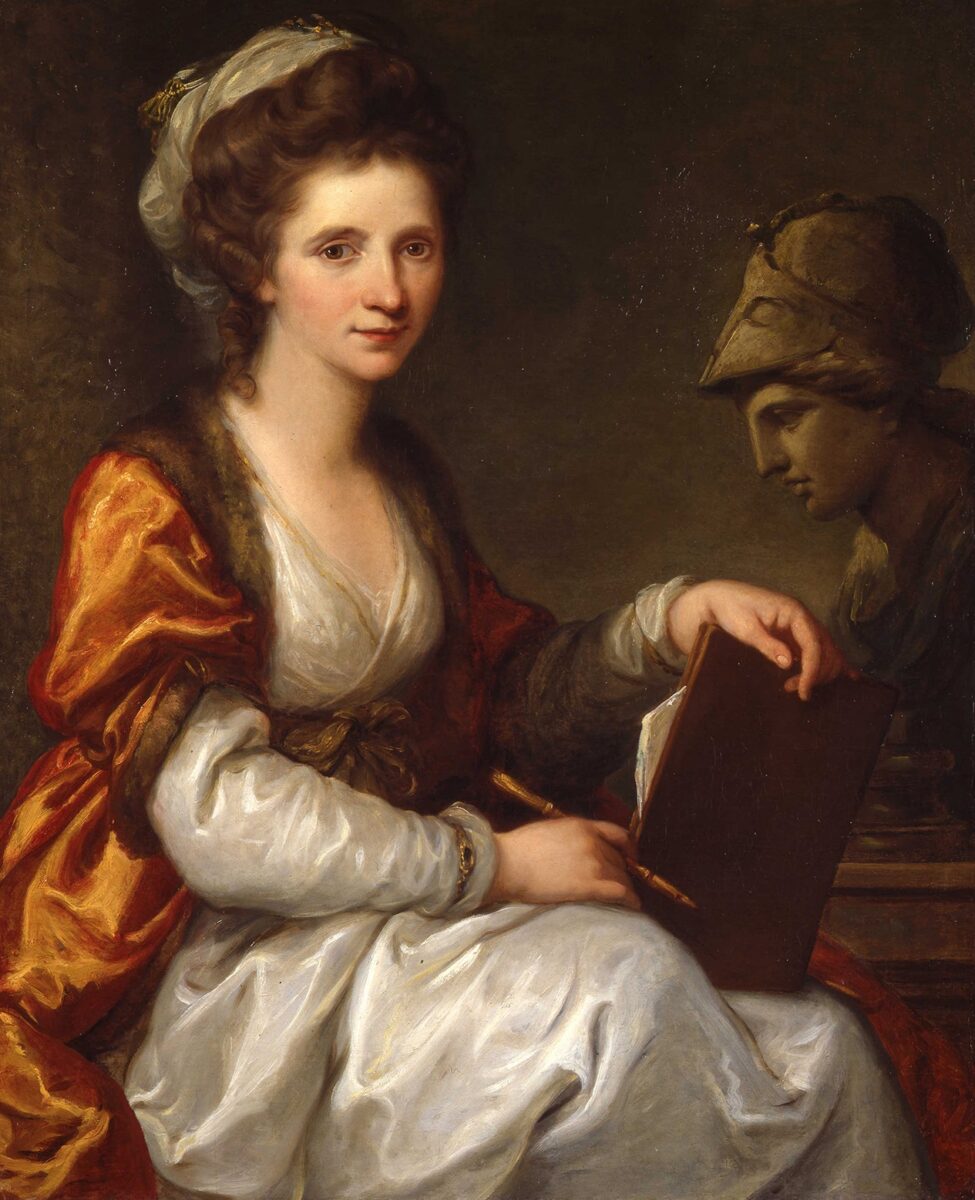 Coinciding with Women’s History Month, the Royal Academy of Arts presents an exhibition dedicated to the life and work of Angelica Kauffman (1741- 1807), a founding member of the Royal Academy and one of the most acclaimed artists of the 18th century.
Coinciding with Women’s History Month, the Royal Academy of Arts presents an exhibition dedicated to the life and work of Angelica Kauffman (1741- 1807), a founding member of the Royal Academy and one of the most acclaimed artists of the 18th century.
Through history paintings as well as portraits, including some of her finest self-portraits, the exhibition traces Kauffman’s artistic career from child prodigy to one of Europe’s most sought-after painters. Over 30 artworks have been brought together for this exhibition with a number of important international loans, many of which have never been seen in the UK before.
Born in Switzerland in 1741, Kauffman’s artistic talent was soon recognised during her childhood. As her family moved between Switzerland, Austria and Italy, Kauffman was trained as both a musician and as a painter, eventually choosing to pursue the latter professionally.
She spent much of her early life in Italy, where she was able to study the works of the Old Masters. She moved to London in 1766 and enjoyed a prosperous career, earning significant fame, fortune and an influential circle of patrons, many of whom were women.
When the Royal Academy was established in 1768, Kauffman was one of only two women founding members, along with Mary Moser. Kauffman exhibited extensively at the Royal Academy throughout her time in London and continued to exhibit there after her return to Rome in 1782, where she would live for the rest of her life.
This exhibition is presented in four sections. Introducing the exhibition is a group of Kauffman’s most celebrated self-portraits. Throughout her career, Kauffman returned to the practice of self-portraiture and presented herself in many different guises. As a woman artist, portraying herself enabled Kauffman to define her identity and take control of how she was seen by others. Highlights include Self-portrait in the Traditional Costume of the Bregenz Forest, 1781 (Tiroler Landesmuseum Ferdinandeum, Innsbruck) and Self-portrait in All-antica Dress, 1787 (Gallerie degli Uffizi, Florence), a work she presented to the Grand Duke of Tuscany for his famous gallery of artists’ self-portraits.
The following section explores Kauffman’s training in Rome and her career after her arrival in London. In London, Kauffman was widely regarded as one of the most sought-after artists of the period; as one contemporary stated ‘the whole world is Angelica mad.’ Her Portrait of Johann Joachim Winckelmann, 1764 (Kunsthaus Zurich), painted when she was just 22 years old, was applauded for its exceptional likeness.
Though very successful as a portraitist, she identified herself primarily as a history painter, the genre at the heart of the Royal Academy’s mission. Notably, Kauffman often chose to focus on female protagonists, such as in Cleopatra Adorning the Tomb of Mark Anthony, c.1769-70 (The Burghley House Collection, Lincolnshire), a picture she exhibited in the second Annual Exhibition of the Royal Academy in 1770.
The third section examines Kauffman and the Royal Academy of Arts, looking at her success and influence in the male dominated society of the 18th century. This section includes Johan Zoffany’s famous group portrait of the Royal Academy members, The Academicians of the Royal Academy, 1771-1772 (Royal Collection Trust, London) in which Kauffman and Moser’s position as women members is starkly apparent as they are not allowed in the Life Room, where the portrait is set, and instead their presence is reduced to portraits on the wall.
Other works in this section include two of the four ceiling paintings Kauffman was commissioned to create for the original home of the Royal Academy in Somerset House: Design, and Composition, 1778-80 (both Royal Academy of Arts, London), Portrait of Joshua Reynolds, 1767 (Saltram House, Devon, National Trust Collection) as well as Self-portrait with a Bust of Minerva, c. 1780-84 (Bündner Kunstmuseum, Chur), which alludes to Reynold’s famous self-portrait painted in 1780.
The final section of the exhibition focuses on Kauffman’s late career in Rome. When she returned to Italy in 1782, her studio near the Spanish Steps became a hub for the cultural elite and her status and reputation continued to prosper. One contemporary described her as ‘the most cultivated woman in Europe.’ She continued to be popular among contemporary women who wanted themselves portrayed, such as Portrait of Emma, Lady Hamilton, as Muse of Comedy, 1791 (Private Collection). In Self-portrait at the Crossroads between the Arts of Music and Painting, 1794 (Nostell Priory, West Yorkshire, National Trust Collection) Kauffman looks back at a key turning point in her life: when she decided to abandon her musical career to devote herself entirely to painting. The work is one of the most highly regarded self-portraits of the 18th century.
The exhibition concludes with one of Kauffman’s few religious paintings, Christ and the Samaritan Woman, 1796 (Neue Pinakothek, Munich), which was one of two canvases carried in triumph at the artist’s funeral procession, organised by the sculptor, and her close friend, Antonio Canova, along with other contemporary artists and scholars.
Angelica Kauffman opens on 1 March at the Royal Academy of Arts. For further information: royalacademy.org.uk
Smith Greenfield is an independent insurance broker specialising in insurance for exclusive lifestyles and collectors of valuable objects including: art insurance, antiques insurance, jewellery insurance, watch insurance, vintage car insurance, fine wine insurance and more. To discuss specialist insurance for your lifestyle, please contact our Premier Client Adviser, Imran Moideen: imran.moideen@smithgreenfield.co.uk
Image: Angelica Kauffman, Self-portrait with Bust of Minerva, c. 1780-1781. Oil on canvas, 93 x 76.5 cm. Grisons Museum of Fine Arts, on deposit from the Gottfried Keller Foundation, Federal Office of Culture, Bern

